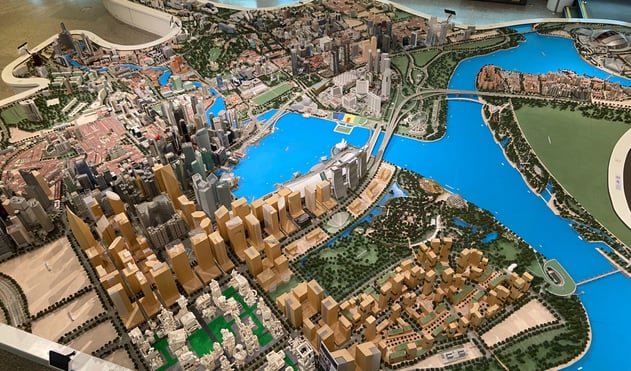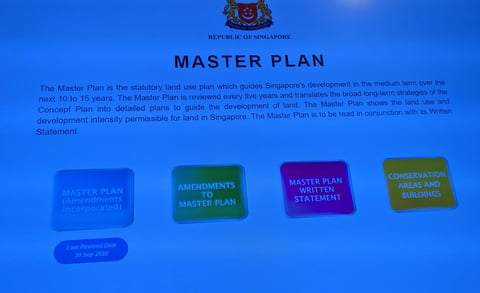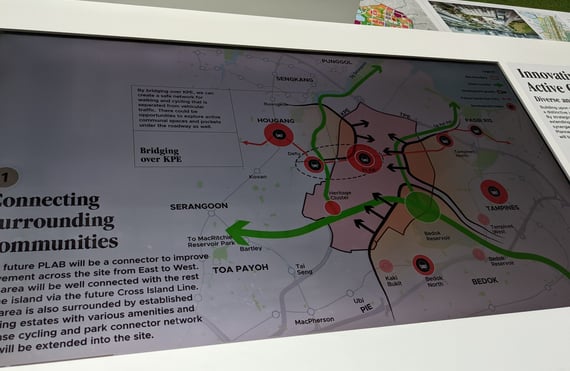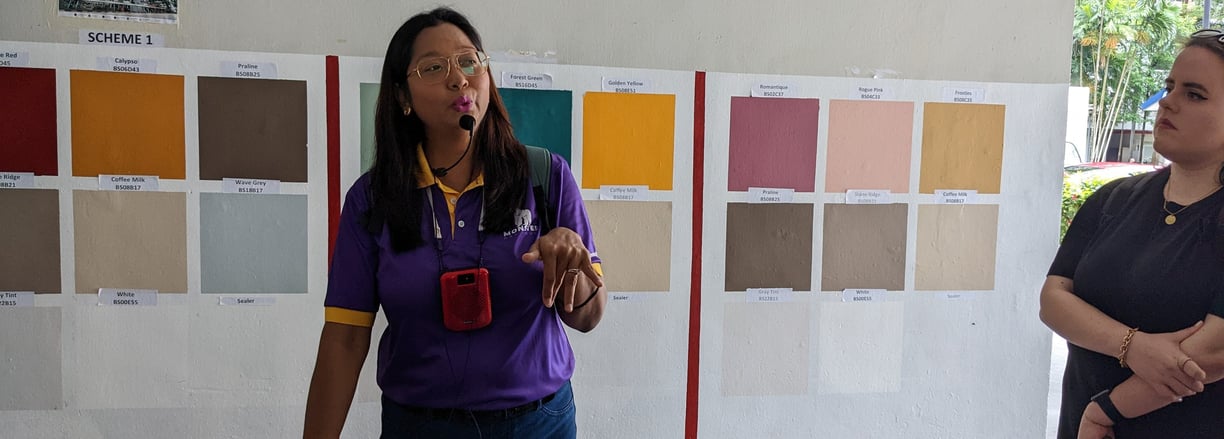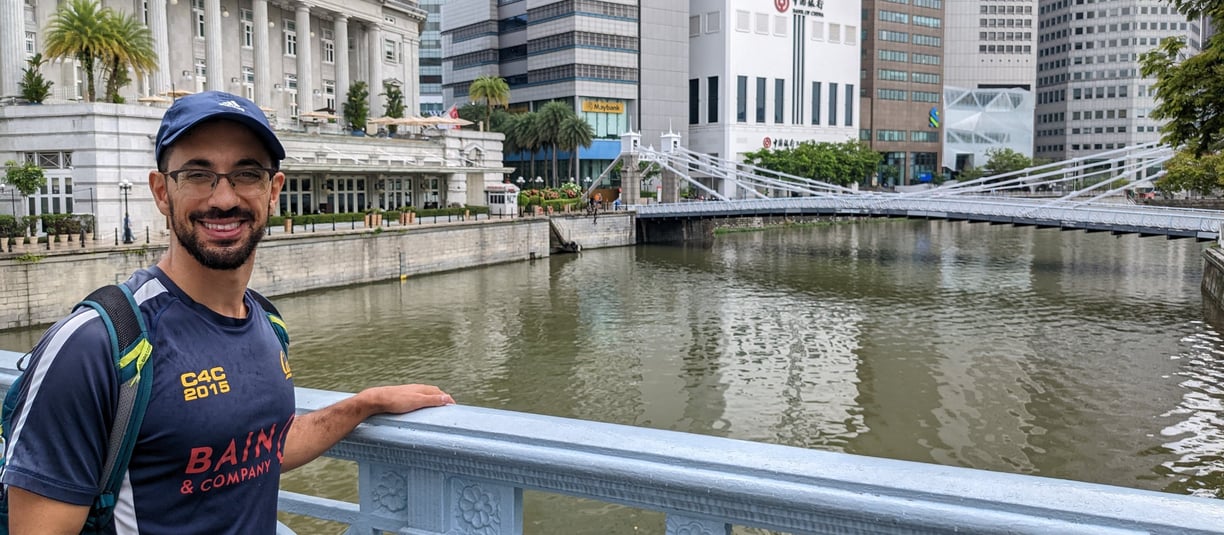Is Singapore Communist?
From land use, to transportation, to housing, much of what we learned about operations in Sinagapore smacked of communism, and we liked it
TRAVEL OBSERVATIONS
In my last post on Singapore, I shared how much we enjoyed it there, in no small part because of the urban planning and efficiency of the place. While there, we went to a museum dedicated to urban planning and took several free walking tours and learned some things about how urban planning happens there. It gave us an inkling of why its so successful, and most of it came down to strong government control. The government arm in charge is the Urban Redevelopment Authority (URA), which "adopts a long-term and comprehensive planning approach to formulate strategic plans such as the Long-Term Plan and the Master Plan to guide the physical development of Singapore in a sustainable manner." This mission statement doesn't sound much different from one that might be used by any city in the US, and most US cities also have long-term master plans (I've worked on quite a few!). The difference is the URA has incredible power belying those master plans. I wanted to dedicate this post to describe some of those powers as well as results and community reaction as we experienced it below.
Land use
We learned that virtually no land in Singapore is privately owned! Literally. The government gives out leases usually (30 to 99 year leases), and those leases come with stipulations. This centralized approach to land use began early in the countries history. Shortly after Singapore gained independence (1965) the Land Acquisition Act came into effect and gave the government the power of compulsory land acquisition for the reason of public development. Government has the ability to take back land from private owners through eminent domain in the United States, but very strong property rights established in the Constitution and several hundred years of judicial case law make the justification for taking property very high (usually taking several years to go through the process for single property take) and requires that government pay fair market value for what they take. But in Singapore, the government is only required to may the land's pre-development value! This makes it much faster and cheaper for the government to take land from private interests for public purposes (like a train line, bike lane or housing development).
Its' worth share also that the government has and continues to engage in huge land reclamation processes, reclaiming land by quite literally filling the ocean. A staggering 25% of the land today is reclaimed from the South China Sea. In the Singapore City Gallery, we saw concept plans for how a huge section of land, free up by land reclamation was going to be developed.
Conservation and climate change
Similarly, to my other categories, the conservation efforts started in the country's independent youth. Singapore River and its banks were the focal point of global trade in the region. The river was the physical center of the town as the great bulk of goods traded in the settlement was handed in its banks, resulting into a flurry of economic but also social activities. But by the 1950s, the clean-up was in response to an extremely polluted, toxic river filled with effluent and trash as we as a waterway overcrowded with boats. In 1969, shortly after Singaporean independence, they kicked off the campaign, the Singapore River Clean-up, which ultimately extended far beyond the river itself. Costing hundreds of millions of dollars, the government's great cleanup focused on the removal or relocation of polluting sources (domestic, trade-related or industrial); development of infrastructure necessary for those affected by relocation, including related services such as water supply, sanitation, wastewater treatment, electricity, awareness and educational posters and programming, and strict law enforcement (including the somewhat famous outlawing of chewing gum and extraordinary high fines for littering). Ultimately, it worked! The river is quite clean today, and so is the entire island. At the City Gallery, I learned about pretty impressive and aggressive goals in the areas of conservation (e.g. open space, water conservation) and emissions (e.g. transportation VMT, electrification, waste) in the city's current master plan. These included three more subway lines by 2030 (one opened while we were there!), 80% of the population able to access an subway station within a 10min walk, a continuous 150km cycling route around the island, retaining more than 7 million trees and a 7000 hectare rainforest open space in the center of the island. They also were considering building new tunnels just to transport freight and building very large new solar facilities.
And because its Singapore, and basically communist, I think all that just might get done by 2030...
Housing
More than 80% of Singaporians live in public housing. This condition also dates back to the 1960's, when the country decided to try and deal with the chaotic slums throughout the urban areas. They embarked in building whole little sub-communities, made up of large apartment building blocks, but also large common areas, police stations, eateries, and service shops for each.
One of our free walking tours was labeled Kampong Glam; when we booked it we thought this was a neighborhood, but its really a public housing development. "Kampong" comes from Malay and means "village" and each of the public housing communities are kampongs. On this tour, our guide (who lived in this community) showed us around the Kampong Glam including its public meeting area, noting many weddings happen there, the local eateries, laundry, trash pickup and police station (it wasn't manned regularly and was really more of a computer bay for people to submit complaints about broken rules plus a panic button). She also noted that the government does building facelifts regularly for each Kampong (about every 10 years), including repainting all the public areas. The color schemes are always selected via community votes.
The public housing is income capped, but the upper end for getting into one is very high (something like $180k in family income) and (according to both free walking guides we talked) most local residents come from and want to remain in kampongs. Most units are also owned, with only very low income folks allowed to rent instead of buy. To get your own public housing unit, you must either be getting married or be 35 or older and apply with a roommate. When you apply, you request a unit based on the kampongs you'd be willing to live in, and the wait can be several years, so multi-generational housing is necessarily frequent. While the government allows for people to select which neighborhood and types of units they apply for, there are a variety of criteria that need to be met. Notably, the the government has quotas of different religions and ethnic group percentages for each Kampong. For instance, they may want Kampong Glam to be only 50% Muslim, and so if your Muslim you may not be allowed to buy a unit here until another Muslim family dies or leaves! Both our tour guides lived in kampongs, and both seemed pretty happy with the whole setup. Some of these logistics smack as distinctly unappealing to me, but the benefit of such thought out and fairly priced public housing complexes (that are more than housing but a whole community space) are clear.
